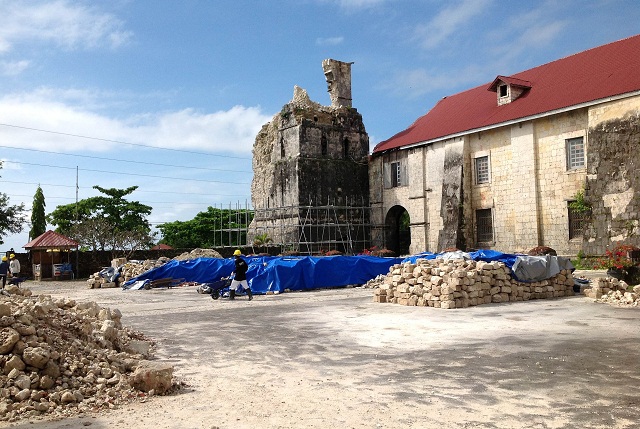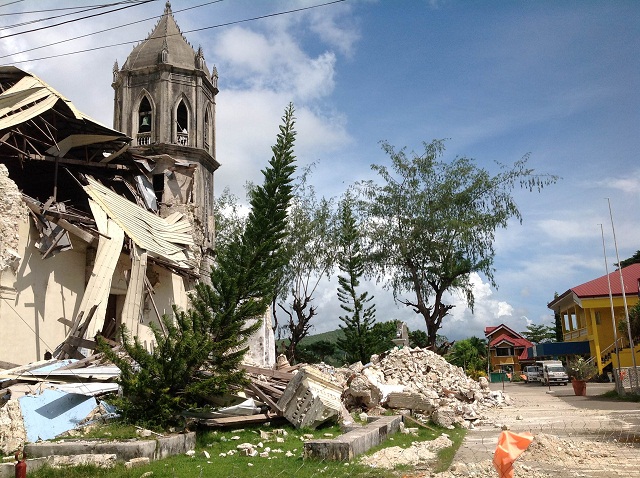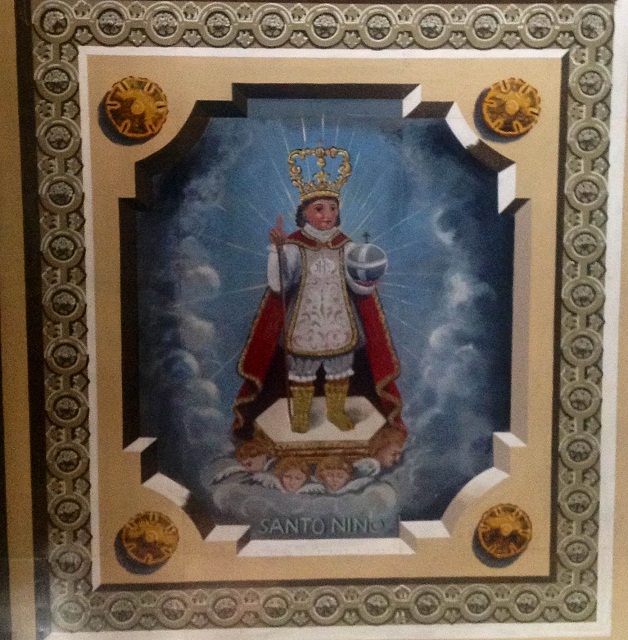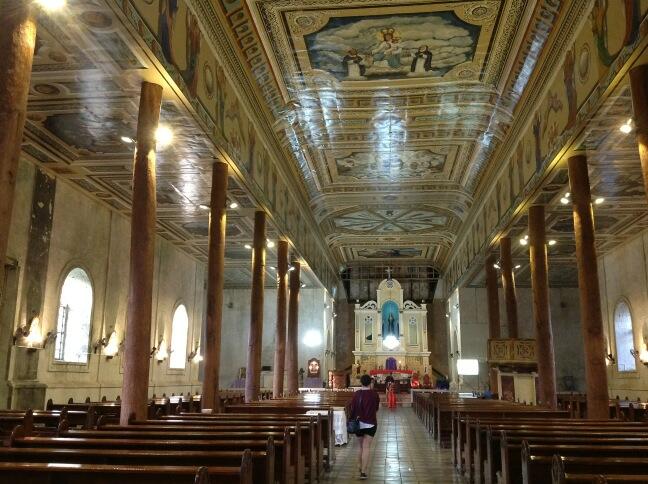Bohol to preserve ruins, promote little-known heritage churches after quake
BACLAYON, Bohol – It used to be a major stop along the tourist route from the Blood Compact memorial to the Chocolate Hills, but after the destructive quake two months ago, the 18th century coral stone church here has lost some of its luster as the most popular heritage cathedral in the province.
“No entry,” a sign on the paved road in front of the church warns motorists, as vehicles are directed to a one-way detour that puts some distance between the crumbled bell tower and the traffic around it.
Inside the Baclayon church, visitors are required to wear hard hats – in case of aftershocks – while taking a look at the damage wrought by the magnitude 7.2 quake last October 15. From the altar, a large crack can be seen on the inner entrance and visitors can only take a cursory look at cordoned off areas where rubble and plaster still litter the floor.
Outside the church walls, workers are busy clearing the debris and undertaking restoration work, in line with rehabilitation strategies drawn up by local tourism players on what to do with heritage cathedrals that were damaged by the quake.
“We have been discussing with the bishop our rehabilitation and reconstruction for the old churches,” Bohol Gov. Edgar Chatto told a media delegation last week.
“For those that cannot be reconstructed, they will just remain as ruins and evidence of the destruction of the earthquake and they will just be promoted as tourist attractions,” he added.
Consultants from the National Museum, National Commission on Culture and the Arts, and the National Historical Institute have been assisting Bohol in the rehabilitation work. Spain also sent a delegation to check on the heritage churches, which were built when the Philippines was still their colony, along with UNESCO, the governor said.
“We have plans of putting up transitional churches beside the ruins while waiting for the time na ma-restore ang reconstructed churches, or as the bishop would say, contemporary churches,” Chatto said.
The local government and tourism industry players are getting assistance from USAID’s Compete project, which has brought various media groups, including GMA News Online, to Bohol to monitor the reconstruction efforts.
Alternative churches
More than any image, the ruins of heritage churches such as Loboc and Loon have caught widespread attention and magnified the destruction from the quake that struck Bohol. But as media portrayal goes, they actually show a small part of the overall impact, as much of the province was largely untouched.
In the capital city of Tagbilaran, there’s a small pile of rubble on the side of the cathedral and parts of the ceiling in ageing government buildings have collapsed. However, visitors would have to look hard for evidence of the powerful quake, as the bucolic scenery has remained just as it was before the natural disaster.
Along the road to the resorts in Panglao, the ruined façade of Dauis church is the only indication that the temblor had affected the island.
With the massive damage in some of the most frequently visited churches, opportunities have opened up for other centuries-old churches to gain the attention of tourists. “Actually, grander than Baclayon ang churches sa west side, pero dinevelop lang sa east side kasi ang main attraction is Chocolate Hills, papunta na rin doon kaya mas convenient yung madadaanan na churches,” says Lucas Nunag, president of the Bohol Tourism Council.
“Actually, grander than Baclayon ang churches sa west side, pero dinevelop lang sa east side kasi ang main attraction is Chocolate Hills, papunta na rin doon kaya mas convenient yung madadaanan na churches,” says Lucas Nunag, president of the Bohol Tourism Council.
For now, the intact churches close to the main tourist trail are those in the towns of Panglao and Alburquerque, he noted. Known simply as Albur church locally, the latter is renowned for having some of the best ceiling paintings in Bohol.
Three years ago, restoration work started in Albur church, which has 14 pillars made of wood. “Dati, nakabalot 'yan ng GI sheet na pininturahan ng simulated marble. Noon siguro naisip nila, pangit yung kahoy, mas maganda yung marble. Nung na-strip off, nakita na solid na straight na kahoy na very rare,” Nunag said.
“This may be the only church na ganon ang pillar, tapos yung haligi na yon, dahil matagal na, nabulok na yung base kasi exposed, they were shored up with cement at bato,” he added.
The ceiling paintings, done in the 1930s, were also restored. There are plans to convert Albur convent into a church art museum, with the help of corporate foundations, Nunag said.
With 47 heritage churches scattered all over Bohol, some in far-flung towns, USAID-Compete communications consultant Andrea Echavez said they are thinking of displaying old photos in the ruined ones so travelers will get an idea of the structures’ former grandeur.
History will also be keeping up with the digital age through QR readers on smart phones that visitors can use to access information about the churches.
“Magiging kasama sa kuwento yung restoration process,” said Nunag. “Pwede kang mag-visita iglesia ng sira-sira na simbahan. Pwede mong tingnan sa umpisa yung restoration, and then tingnan kung ano na ang hitsura ngayon.” — BM, GMA News




